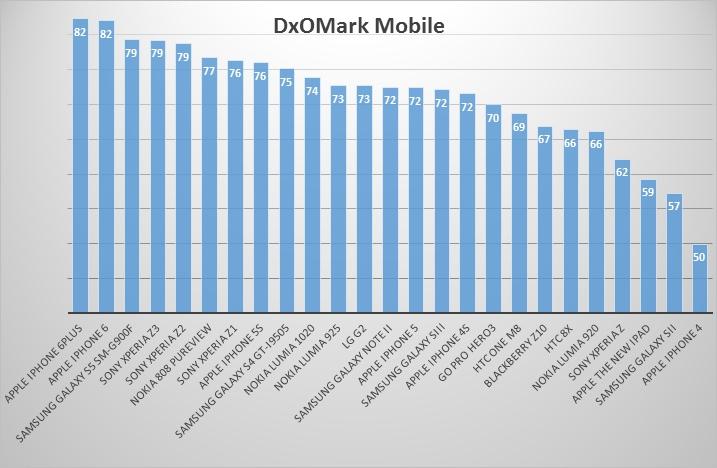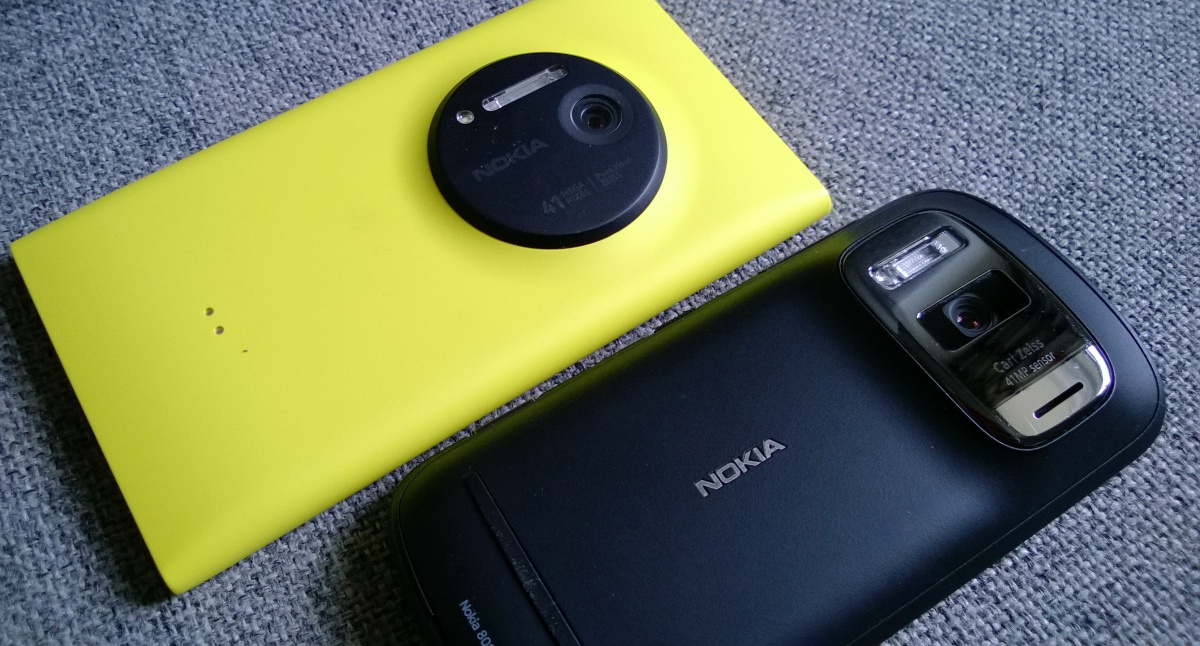Now, don't get me wrong, there's benefit in looking at colour balance and accuracy in photos, and the DxO folk do a good job at this. And yes, the Lumia 1020 (and Nokia 808 before it) can sometimes get these factors wrong. But here's DxO's latest overall chart:

Now look, there are other factors used in real life which just aren't taken into account by DxO's scoring system:
- Indoors or in low light, shooting people and other nearby moving objects, LED flash is almost completely useless. What's needed is a Xenon flash, lighting the scene 10x brighter and in 1/100th the time. I've ranted enough about this in the past, but it's the ONLY way to ensure that low light people shots aren't blurred by the subject's movement.

A typical shot from the Nokia 808 or Lumia 1020, Xenon crisply freezing people and actions - James and Trevor were clinking glasses in the classic 'cheers' action - note the beer in the glass caught mid-slosh. Try snapping this scene on an iPhone 6 and it'll be a blurry mess.
"Get them to pose" will no doubt be the answer, as in the DxO test shots, but who wants an album full of 'posed' shots? The best shots are the most natural and usually involve smiling or laughter at the very least. Xenon flash is a huge factor and it needs taking into account when comparing phone cameras, which are highly likely to be used 'down the pub' or in a living room or at a party.
- There's no accounting for innovative features like the PureView zooming system, whereby you get genuinely lossless zoom up to 4x. When you're trying to get (optically) closer to a subject to get a more candid shot, Nokia's high megapixel system is genuinely unique. Add in the 'reframe' system on the 1020 and it's a winning combination. For example, take a look at this real world example:

See that cool 'Blade' in the distance? Using the built-in PureView zoom (and with a bit of re-framing on the phone using the supplied facility, as well), we can save or share this image:

________________________
I'm no fanboy, mind you. I'm not drinking the Nokia/Microsoft kool-aid (well, maybe a tiny bit - it's tasty). The 1020's shot to shot time is too slow and the camera application is too slow to start (note that the older 808 was a lot faster, thanks to a dedicated imaging signal processor). But, if we're concentrating on absolute image quality, as the DxO folk are, then camera speed shouldn't matter. And it beggars belief that the Xenon flash and zoom functions on the Nokia 808 and Lumia 1020 weren't considered at all in the scoring.
It should also be noted that the DxO system also factors in video capture performance, an area where I'd agree that Nokia doesn't automatically top the field, though the PureView zoom works even better for video than it does for stills. And, despite the 1020 having OIS, the Snapdragon S4 chipset isn't up to capturing 4K video or handling super-fast frame rates for special effects, so it's not surprising that the (808 and) 1020 fall slightly behind here. But the OIS does produce very decent video capture, the 1020's no sluggard in this regard, plus on both the 808 and 1020 you get the stereo Rich Recording HAAC mikes that can cope with the loudest rock gigs.

So is there a really reliable smartphone camera test that includes flash performance on moving subjects? And maximum detail when zoomed? Nope, at least not to my knowledge. I do try in my own camera head to heads to include these factors among the test scenes, but I suspect I'm in the minority - most reviewers shoot testcards that don't laugh and ignore the zoom aspects of Nokia's PureView technology - go figure, on both counts.
For my part, I'll be putting the Xperia Z3 and Z3 Compact head to head with the Nokia 808 and Lumia 1020 in the next week, watch this space. And, I promise, no testcards or statues. You might get a steam train or two and a laughing guy with a beer bottle though!!
